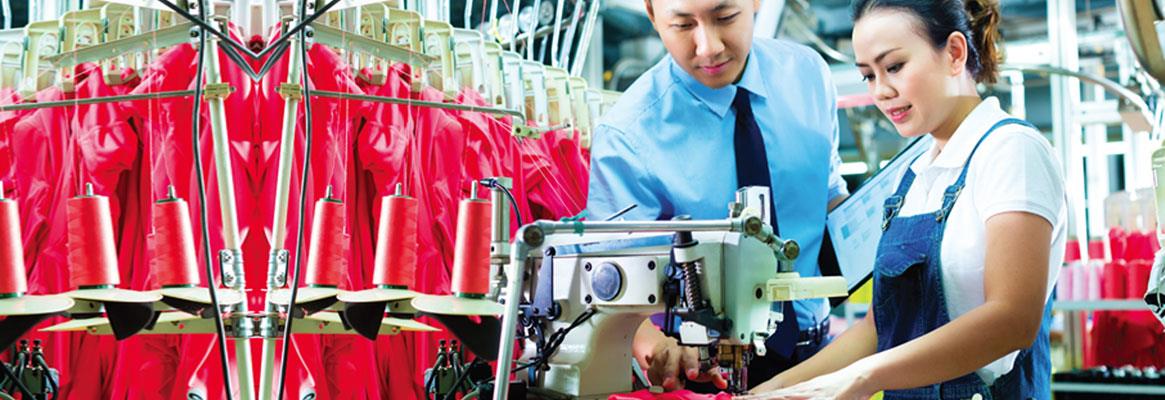No other country is as relevant as China when it comes to world’s need for manufactured goods, but the question is how long it will sustain.
Today’s China has no rival in the field of manufacturing. China accounted for 28.7 per cent of global manufacturing output in 2019, putting the country more than 10 percentage points ahead of the United States which used to have the world’s largest manufacturing sectors until China overtook it in 2010. Domestically, Chinese manufacturing sector contributes 30 per cent of the country’s total economic output. Chinese dominance in the global industrial sector can be gauged by the fact that among the world’s more than 500 major industrial products, China ranks first in output of over 220. China has become the only country in the world to obtain all the industrial categories listed in the United Nations industrial classification. The country’s industrial added value saw an average annual growth of 11 per cent from ¥12 billion in 1952 to over ¥30 trillion in 2018. In the past 70 years, China’s small and medium companies and private companies played an important role in increasing employment, keeping stable growth and stimulating innovation. By the end of 2018, the number of small and medium companies surpassed 30 million and the number of self-employed industrial and commercial households exceeded 70 million. These contribute over 50 per cent of the country’s tax revenue, over 60 per cent of the GDP, over 70 per cent of the technological innovations, and more than 80 per cent of workforce.
Chinese Exports
China manufactures for the world at large scale. Overall Chinese exports have grown from ~$2.3 billion in 2015 to ~$2.5 billion in 2019, at a CAGR of 2.4 per cent. Textiles and clothing exports forms around 23 per cent of its total exports and has declined at a CAGR of 1.1 per cent during the same period. As per the General Administration of Customs, exports of China-made apparel, clothing and accessories from the country grew 51.7 per cent year-on-year to $44.41 billion in the first four months of 2021. Yarn and fabric exports too surged 18 per cent to $43.96 billion during the same period. In the month of April 2021 alone, apparel and accessories export brought $11.12 billion to China, while textile yarns, fabrics and related products earned $12.15 billion. According to another data from the Ministry of Industry & Information Technology, Chinese textile and clothing exports increased 9.6 per cent to $291.22 billion in 2020 on yearly basis despite the COVID-19 pandemic and global economic slowdown. In terms of segments, textile export jumped 29.2 per cent y-o-y to $153.84 billion, while garment export declined by 6.4 per cent to $137.38 billion.
Manufacturing Revolution
China, a case study in manufacturing economy, became the leading manufacturer of goods in the world owing to various factors. It all began with the availability of cheap labour that helped its emergence as ‘world’s factory’. Initially, China was an agrarian economy with large rural population. When this large rural and lower-middle class population began migrating to industrial areas within the country few decades back, it provided abundant supply of labour that was willing to work in multiple shifts at low wages, providing cheap labour for factories in China. The low labour cost attracted a consistent flow of foreign orders that eventually resulted in expansion of Chinese manufacturing sector. With growth in China’s industrial production, related networks of suppliers, component manufacturers, distributors, government agencies and customers also expanded, creating a self-evolved business ecosystem.
Although cheap Chinese goods came at the cost of compromising human rights, health and safety norms, child and involuntary labour, fair wages, and environment protection standards in the factories, foreign buyers continued importing goods from China, unabashedly. China’s growth story continued. Earlier in 1985, the Chinese government had introduced Export Tax Rebate Policy which abolished double taxation on exported goods. Additionally, consumer products from China were exempted from any import taxes. This kept the cost of production low and enabled the country to attract investors and companies looking to produce low-cost goods. Simultaneously, China kept ‘positioning-repositioning’ its yuan against dollar from time to time to benefit its export. All these factors together made China the global sourcing hub that it is today.
Winds of Change
However, things have started changing in the past few years owing to economic changes in the country. The wages of Chinese workers have more than doubled in the last ten years forcing the companies to seek new countries where worker wages are still low. Labour costs have risen because of population changes. Today, China is an aging nation whose one-child policy has derailed regular supply of next generation of young workers. Lack of next generation workers to replace the ones that are currently retiring or will be retiring in the coming years is a serious concern. Both options – whether it is retaining current workers by paying them higher wages or employing labour from other countries – tend to increase the labour cost. At the same time, the adoption of a consumption-oriented economy by the Chinese government has led to wage increase in all jobs, pushing local governments too to raise minimum wages from time to time. Therefore, many overseas companies which moved to China lured by low labour cost have been forced to re-evaluate their setup in the country as well as diversify manufacturing strategies.
Additionally, a variety of events over the past several years caused a ripple effect in the manufacturing industry. First it was the trade war between two global economic superpowers – US and China, that casted its shadow on global supply chain. Then it was the pandemic that impacted the already-stressed situation further due to China shutdown to contain COVID-19 spread. The tension created by trade war in general, and pandemic in particular, exposed heavy reliance of many companies on China for raw materials, contract manufacturing and production facilities. There arose an urgent need to rethink and redraw a supply chain strategy that would facilitate uninterrupted functioning in adverse times. Such needs could be addressed only by having geographically diverse supply base that would ensure access to markets in multiple countries. The geographic spread could also well empower the companies to protect their business interests against a wide range of risks. This builds the case for a strategy called “China Plus One”.
China Plus One
So, what is “China Plus One”? To put it simply, it is a business strategy that aims to avoid investing only in China, and instead diversify business into other countries. In other terms, it may also mean continuing using the resources allocated in China but also adding other sourcing hubs having lower wages to the mix. There are two strategies that are gaining popularity under this. The first one is to meaningfully streamline supply base in existing sourcing base by leveraging business with fewer suppliers. The second one is to increase the supplier base in fewer countries that are reliable. The key is to establish stronger strategic supplier relationships across the entire matrix so as to continue building flexibility and dual (or multiple) sourcing options. The strategy appealing to all sorts of businesses began taking shape few years back.
It was thought better to adopt China Plus One strategy and relocate only a part of the business to other countries such as Bangladesh, India, Indonesia, Malaysia, Myanmar, Thailand and Vietnam with Africa and Latin America being other alternatives. Even prior to COVID in 2019, over 50 multinational companies had decided to move their manufacturing either in part or completely from China to Southeast Asia and Mexico.
According to a 2019 survey on tariffs conducted by AmCham Shanghai and the Chinese government, around 40 per cent of companies were found to have relocated or were considering relocating their manufacturing out of China, mostly into emerging low-cost countries as their target destination, especially Southeast Asia (25 per cent opted for the region as next hub). Many added new operations to the region to supplement their current production. The destination countries were also more than happy to welcome these companies and began streamlining the setup process for their entry. A case in point is Vietnam which targeted IT industry and secured deals from both Samsung and Intel. Other prime candidates for manufacturing especially in textiles included Malaysia, Singapore, Thailand, Indonesia and the Philippines.
The prime drivers of China Plus One strategy are high labour cost, pandemic experience and political gamesmanship triggered by trade war. While pandemic-affect will subside sooner or later and labour cost will also undergo correction in due course of time, it is the US-China trade war that is expected to play long-lasting role in fuelling China Plus One strategy.
Us-China Trade War
As of 2019, US-China bilateral trade reached $559 billion, leading US into a large and growing trade deficit with China. The US trade shortfall rose to $375.6 billion in 2017 from $103.1 billion in 2002, and by 2018 it escalated to $378 billion. To contain further trade deficit, US imposed tariffs on more than $360 billion worth of Chinese goods by the end of 2019. China retaliated with import duties of its own worth $110 billion on US products, triggering a trade war. These decisions made the buyers in both countries to pay higher import taxes to bring purchases into the country. To justify their respective decisions, the US accused China of unfair trade practices and intellectual property theft, while China perceived the US move as an attempt to curb China’s rise as a global economic power. The war took its toll on fashion too.
Retailers like GAP reduced its manufacturing exposure to China from 25 per cent in 2016 to 21 per cent in 2019. The company had been moving sourcing out of China for the last several years and announced to continue curtailing it further. The trade war had increased costs for GAP consumers and tempered growth in its third largest market – China. The supply chain agreements emanating from China are another sore spot. Specifically for China, the company worked diligently to mitigate the potential problem for consumers by incrementally moving away from reliance on the region. Including only apparel, its penetration is approximately 16 per cent, which is significantly lower than the relevant portions of the industry. That level is lower than that of peers like Abercrombie & Fitch, one quarter of whose goods are manufactured in China. By March 2021, there were speculations of GAP mulling over selling its China business as part of revamping its business in the country. Morgan Stanley was roped in to study options and reach out to the prospective suitors. GAP had entered China in 2010 with offline as well as online presence.








Comments